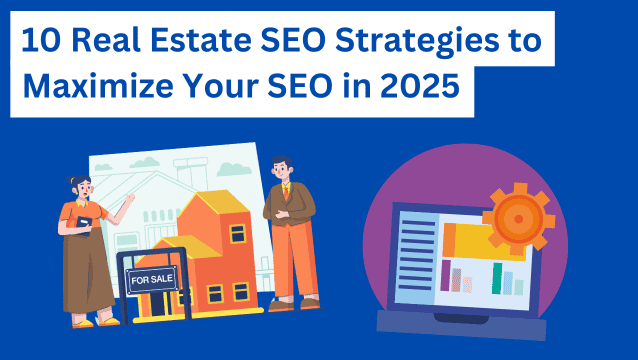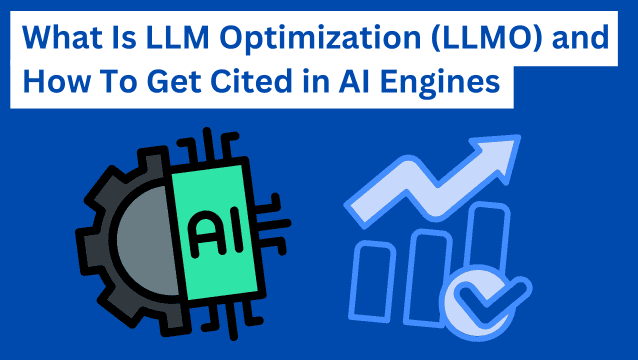It doesn’t matter how amazing your content is. Without search engine optimization strategies, your target audience may never see it.
One SEO best practice to include in your strategy is building backlinks. Backlinks allow search engines to recognize your content as authoritative and worthwhile and show it to your target audience.
The more backlinks you earn, the more valuable search engines will find your content (and website). However, you should note that not every link benefits your page.
Link quality is an important factor you should consider. Otherwise, the links can negatively affect your page.
In this post, we’ll discuss what you need to know about link building using guest posting, the benefits of backlink building, and how to do it right.
What is a backlink?
A backlink is an inbound link from another site. It’s a means to refer people to a specific page, platform, post, image, or other online content. By clicking a link, readers get directed to where you want them to go.
That’s not the links’ only contribution – they also help search engines discover your web pages.
Crawling is the process of a search engine examining your web pages. It’s a step before indexing when search engines organize the pages they’ve already crawled (read: discovered). After indexing in search engine processes, the next step is ranking your pages.
When you create a website that incorporates well-structured links, you can create optimized links for your pages, which can lead to search engines crawling, indexing, and ranking them.
Links are among the top three ranking factors in Google’s page ranking algorithm. In fact, the first ranking page on Google has an average of 3.8x more backlinks than positions 2–10.

But what are backlinks? Backlinks are the links you get from other websites to your pages.
For example, a website links back to one of your pages in its blog post that relates to the topic you’ve covered in the content of your page. They’re external links for that website and backlinks for your website. The link in the above paragraph is a perfect example of this.
Screenshot provided by author
The hyperlink navigates to a blog post from SearchEngineJournal about Google Ranking Factors. It’s relevant because the paragraph refers to ranking factors, so the link offers the reader (you) an opportunity to read more about ranking factors if you’d like to.
The Google algorithm will recognize that link as a valuable backlink because it’s relevant and navigates to a reputable, authoritative site. While all that’s great for our readers and SearchEngineJournal, this link doesn’t necessarily help boost our link profile. But we’ll explain how to do that later.
Anchor text is the blue text that links to the hyperlink in the text. In the above example, the anchor text is “top two ranking factors.” Backlink anchor text should always be relevant and descriptive – encouraging readers to click.
What is link building?
Link building is an off-page SEO marketing strategy to get high-quality backlinks from other websites in your industry or niche. It’s a vital strategy for several reasons, including the ranking factors mentioned above, and it helps you reach a broader audience.
With more backlinks pointing to your content, more people are likely to find you, read your content, and make their way through your sales funnel. It’s an effective strategy and a necessary one to remain competitive. But how do you implement it?
That’s next on the agenda. Let’s take a look.
How to build quality links
There are many ways to successfully approach link building, but regardless of your chosen strategy, it’s crucial to have buy-in from all your teams and team members. Collaboration and cooperation are key.
Ensure everyone, from your outreach specialist to your content writer, knows the steps involved in link building. A great way to accomplish this is to use agile project management tools. Using these platforms, every team member is on the same page, and meeting deadlines is simple.
Source: Nifty
Once your team can seamlessly communicate, you’re ready to choose your strategy and start building links. In this article, we’ll focus on guest posting as our strategy.

Want a deeper dive into other strategies? Check out this article: What is Link Building? The Beginner’s Ultimate Guide
Here are the factors to consider when reaching out to websites for guest posting opportunities.
1. Search for authoritative websites to partner with
To find authoritative websites, check the domain ranking or domain authority using SEO software suites such as Ahrefs (DR) or Moz (DA).
When doing link building, you should be careful about what links you are building. In other words, you must consider the quality of the backlinks you build.
Your ultimate goal is to secure as many high-quality links as possible. High-quality links meet the following criteria:
- Has a high DR/DA (over DR50 if you’re a new business or website; if you’re an established business, look for DR/DA higher than yours)
- Targets the same audience or segment
- Site is in your industry (not necessarily your niche)
Acquiring backlinks from sites that meet these criteria will put your site on the fast track to increased visibility, higher search engine rankings, and increased DR/DA.
Screenshot provided by author
2. Consider websites in your industry
Is the website relevant to your industry? If not, your content may not resonate with their audience. Prioritize building backlinks to sites within your industry to keep a more relevant audience engaged.
3. Look for a similar audience
Once you’ve exhausted potential backlinks in your industry, it’s worth considering opportunities outside your industry as long as they share your audience. If you’ve ever seen an influencer campaign on social media, you’ve seen this in action.
It’s simple cross-promotion, and it works like a charm.
Think Uber + Spotify. Different industries, different brands, similar audiences. Put a cross-promotional campaign together and… win-win.
Subscribers could listen to their favorite playlists anytime they caught an Uber. It was a massive hit and made waves on social media, including this article on LinkedIn — earning loads of backlinks for the brands.
4. Check the ranking
How is the website ranked in SERPs? It’s not beneficial if the website’s ranking is too low.
However, if the website ranks higher than yours, that’s promising. Even if it’s ranked significantly higher, it can still be worth reaching out or pitching a topic idea.
Who knows? Maybe they’ll like what you have in mind. Nothing ventured, nothing gained, right? Give it a shot.
5. Cross out competitors
Competitors don’t link to each other. This should be a no-brainer, but we’ll spell it out to be clear.
Businesses, companies, organizations, etc. that provide the same product, service, solutions, etc., won’t link back to your site or content, and you shouldn’t link to theirs.
6. Stay away from shady techniques
Let’s face it, link building is hard work.
Research, outreach, pitching, content creation, SEO, on and on, over and over. And then you have to wait for results in the SERPs.
Instant gratification it is not.
But that doesn’t mean you should allow yourself to use less upstanding methods.
We’re talking about black hat link building strategies. For example, buying links from link farms.
But you should know that the quickest way to achieve the desired results isn’t always the best way. The same goes for finding link opportunities.
Google has strict penalties for spammy websites. If you wind up with unreputable backlinks, you can suffer severe penalties, including a loss of rankings (read: your pages disappear from SERP results). All your hard work, erased in an instant.
Can you contact Google and argue against the penalties? Yes, but there’s no guarantee of restoration.
So, black hat or white hat link building? The choice is yours.
Why should you build quality links?
If you’re not sure whether building links for your website is worth the effort, maybe you should know more about link building statistics and trends. Let’s dig deeper into the benefits of link building:
1. Growing your network
Since you do a lot of email outreach to websites active in your niche when link building, you can significantly grow your business relationships.
When you reach out to websites, you either offer them a link exchange collaboration or guest blogging on their blog. In a link exchange, you add one of their links to one of your relevant blog posts in return for a link placement (yours) in one of theirs.
In guest blogging, you write a unique article from scratch specifically for their blog in which you add one of your relevant links.
In both methods, you are offering relevant content to them. Providing quality content lays a foundation for strong business relationships based on fruitful collaborations. Therefore, it’s not just about link building but also about building lasting, long-term relationships with your industry’s thought leaders and influencers.
For this to happen you have to make sure your emails reach them so write captivating subject lines, email them from your professional email account, and use an SPF generator to avoid landing in spam.
2. Improving referral traffic
Link building can significantly enhance your ranking on search engines and increase your website’s organic traffic. When you build a link on an authoritative website, you can drive traffic to your page.
The audience of the other websites reads through the blog post, and if they find your anchor text enticing enough, they’ll likely click on your link and navigate to your page.
As long as you’ve followed best practices when building your links, the traffic you get will also be relevant.
Therefore, link building can also convert the leads you get on other websites. It’s not just about improving your SEO but increasing conversions and improving your bottom line.
3. Building brand awareness
Leaving your links in the blog posts of high-authority websites can help you build your brand awareness. Publish quality long-format content to establish yourself as a thought leader and authority in your industry. Expand your brand awareness by building backlinks to your thought leadership content.
These are common SEO goals and are highly achievable with the right strategies in place.
Wrap Up
At the end of the day, the goal of building backlinks is to achieve higher domain authority and more organic traffic to your website. All this enhances your online visibility, making you a go-to source for the issues to which you offer solutions — and that can increase your conversion rates.
Strategic link building isn’t just good practice; it’s a powerful tool for reaching your business goals. As you implement SEO strategies, remember the impact that purposeful link-building can have on your success.
Take practical steps that lead to real results. And if you need an extra helping hand, remember that a link building agency like uSERP can do the heavy lifting for you and guarantee high-authority links every month.


